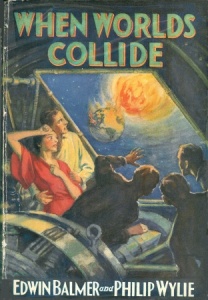
Welcome to my blog about the interesting things that happen when technology innovation and business execution are on a collision course. These collisions are not always pretty, but sometimes they have useful outcomes and in my experience they are almost always instructive.
I like to use When Worlds Collide as a metaphor not because the story itself is particularly relevant — I am not really suggesting that we all flee Mother Earth before it’s too late — but rather because of the classic illustration on the book jacket of the 1933 novel by Edwin Balmer and Philip Wylie. It shows the occupants of a space ship watching in helpless horror as the Earth is destroyed in a cataclysmic collision. I sometimes think that business leaders and innovators live on different worlds. They are trained to to look at the future differently, and they are rewarded differently. They think about their relationship to the business in fundamentally different ways. When strategic choices have to be made, these are the worlds that collide.
We will see our share of businesses that are poised for success but are ultimately doomed by colliding worlds. “I can tell you about train wrecks that I’ve seen up close,” said a CTO of a major IT company. “The last thing I want to see is another science fair project,” said the CEO of an East Coast software company. But we will also see examples of technology leaders who took control of business objectives or heads of major business units who realized that today’s immature technology can be the dominating force in a market that does not yet exist. These are the success stories — companies that prospered even when innovation and execution seemed hopelessly incompatible.
Business leaders, CEOs, CTO’s, Boards of Directors, Research Directors aren’t helpless observers of catastrophes. Sometimes — too rarely in my view — general management tries to understand why innovators act the way they do, and innovators channel their creative energy into commercially meaningful pathways. When that happens, magic can occur.